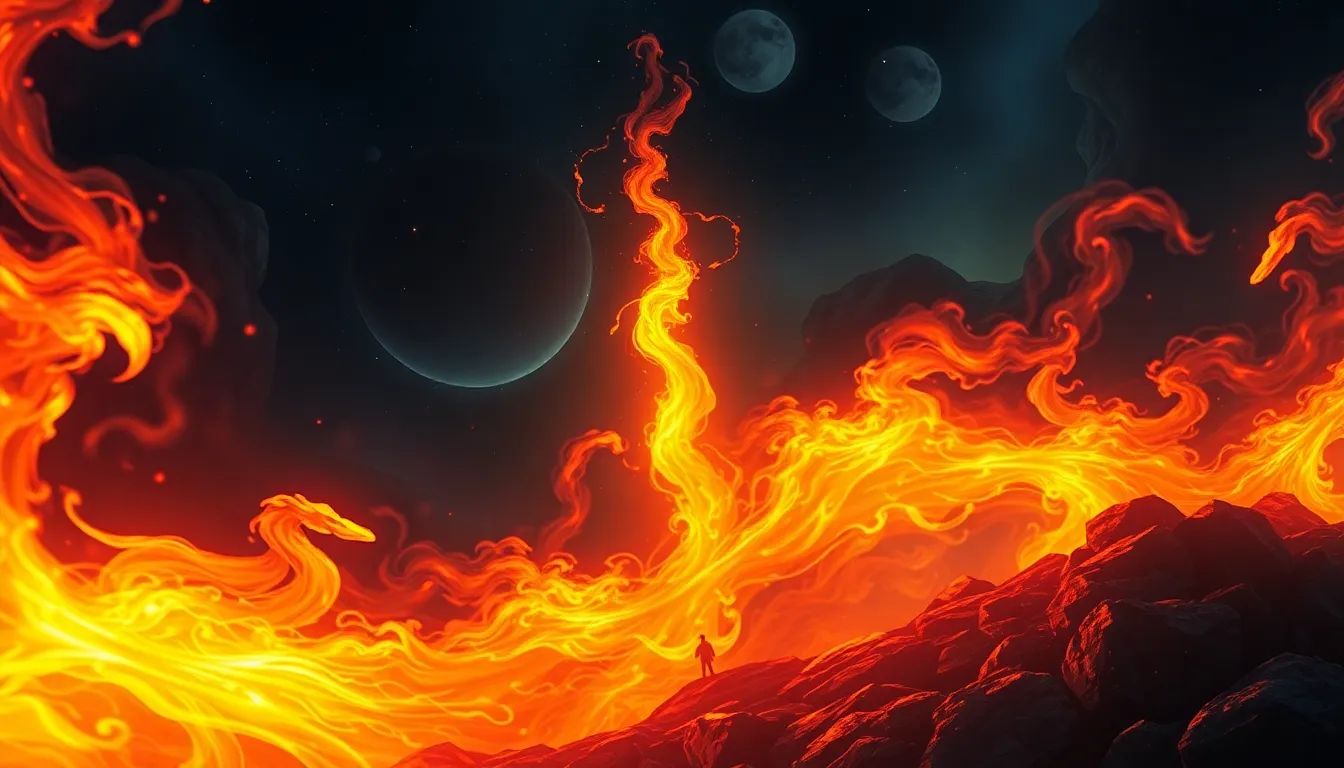The Strigoi in Art and Music: Reflecting the Myth through Creative Expressions
I. Introduction
The Strigoi, a creature deeply entrenched in Romanian folklore, embodies the fears and cultural beliefs of a society that has long grappled with the concepts of death and the afterlife. Defined as troubled spirits that rise from the grave, Strigoi are often associated with vampiric qualities, symbolizing the darker aspects of human existence. Their significance transcends mere superstition; they represent a rich tapestry of cultural narratives that continue to resonate through various forms of creative expression.
This article explores the cultural impact of Strigoi on art and music, delving into how these myths have been represented and reinterpreted over time. Through examining visual arts, music, literature, and film, we aim to uncover the enduring legacy of Strigoi and how they reflect the complexities of Romanian identity and heritage.
II. Historical Context of the Strigoi Myth
The origins of the Strigoi legend can be traced back to ancient Romanian beliefs about the dead and the supernatural. Early accounts describe Strigoi as the souls of the deceased who return to the living world, often to seek vengeance or to protect their loved ones. The evolution of this myth over the centuries has seen it intertwine with various historical events, social changes, and the influence of neighboring cultures.
In the past, the Strigoi held a significant role in Romanian society, serving as a cautionary tale about the consequences of a life lived in disobedience to social norms. They symbolize not only fear of the unknown but also the importance of honoring one’s ancestors. The Strigoi myth has thus become a powerful symbol, representing the struggle between life and death, and the moral dilemmas faced by individuals in society.
III. The Strigoi in Visual Arts
Visual arts have long been a medium through which the Strigoi myth has been expressed. Traditional representations can be found in folk art and religious iconography, where Strigoi are depicted with distinct features such as pallid skin and a ghastly appearance. These representations often serve to invoke fear and respect for the supernatural.
In contemporary art, the influence of Strigoi can be seen in various forms of visual storytelling. Artists draw inspiration from the myth to explore themes of mortality, identity, and the human condition. Some notable case studies include:
- Victor Brauner: A surrealist painter whose works often incorporate elements of the Strigoi myth.
- Ion Băieșu: His portraits depict the haunting essence of Strigoi, merging folklore with modern artistic expression.
- Radu Beligan: Known for his installations that challenge perceptions of life and death through Strigoi symbolism.
IV. The Strigoi in Music
Music has been a vital medium for preserving and transmitting the lore of Strigoi. Traditional folk music often includes storytelling elements that recount tales of Strigoi, utilizing instruments like the violin and pan flute to evoke a haunting atmosphere. These songs are not merely entertainment; they serve as a means of cultural transmission, connecting generations through shared narratives.
In modern times, various genres and artists have drawn inspiration from the Strigoi myth, integrating it into contemporary music. Notable examples include:
- Folk and Ethno Music: Artists like Grigore Lese and Maria Tănase have incorporated Strigoi themes into their performances.
- Rock and Metal: Bands such as Negură Bunget and Cradle of Filth have explored dark themes related to Strigoi in their lyrics and imagery.
Specific songs and compositions often depict narratives of Strigoi, weaving tales of love, loss, and the supernatural. Analyzing these works allows for a deeper understanding of how the myth has been adapted to resonate with contemporary audiences.
V. The Strigoi in Literature and Poetry
The influence of the Strigoi myth extends into Romanian literature, where it has inspired countless authors and poets. Classic works often explore the themes of life after death, morality, and the supernatural, with Strigoi serving as central figures in many narratives.
Poetry, in particular, has drawn on Strigoi symbolism to convey emotions and existential dilemmas. Poets like George Coșbuc and Lucian Blaga have used the myth to reflect on human nature and societal issues.
Furthermore, a comparative analysis with other cultural vampire myths reveals similarities and differences in how societies interpret these figures. While the Strigoi are unique to Romanian folklore, their themes resonate with global narratives surrounding vampires and the undead.
VI. The Strigoi in Film and Theatre
Portrayals of Strigoi in film and theatre have varied widely, from traditional adaptations in Romanian cinema to more modern interpretations in international films. Romanian directors have often used Strigoi as a means to explore cultural identity and historical trauma, while global filmmakers have incorporated these myths into broader narratives about vampires and the supernatural.
Theatrical adaptations have also sought to reinterpret the Strigoi myth, using dramatic techniques to evoke the tension between the living and the dead. These adaptations often focus on the emotional and psychological aspects of the Strigoi, providing a fresh perspective on this ancient myth.
The impact of visual storytelling on the perception of Strigoi is significant, as it brings the myth into contemporary discourse, challenging audiences to confront their fears and beliefs about death and the afterlife.
VII. The Cultural Significance of Artistic Representations
Art and music play a crucial role in perpetuating the Strigoi myth, ensuring that these stories are not forgotten. Through creative expressions, the myth continues to evolve, adapting to new cultural contexts while retaining its core themes.
The role of these artistic representations extends beyond mere entertainment; they contribute to cultural identity and heritage. As artists engage with the Strigoi myth, they foster a sense of community and shared history among audiences.
Contemporary society engages with the Strigoi myth in various ways, from academic discussions to popular culture. The resonance of these narratives in modern media demonstrates the enduring power of folklore and its ability to connect generations.
VIII. Conclusion
In summary, the Strigoi myth has had a profound impact on art and music, reflecting the complexities of Romanian culture and identity. Through visual arts, music, literature, and film, the Strigoi have been reinterpreted and reshaped, ensuring their relevance in contemporary society.
As we reflect on the enduring legacy of the Strigoi, it becomes clear that preserving folklore through creative mediums is essential. These artistic expressions not only honor the past but also inspire future generations to engage with their cultural heritage.
Ultimately, the Strigoi myth serves as a testament to the power of storytelling, reminding us of our shared fears, hopes, and the unending quest for understanding the mysteries of life and death.



